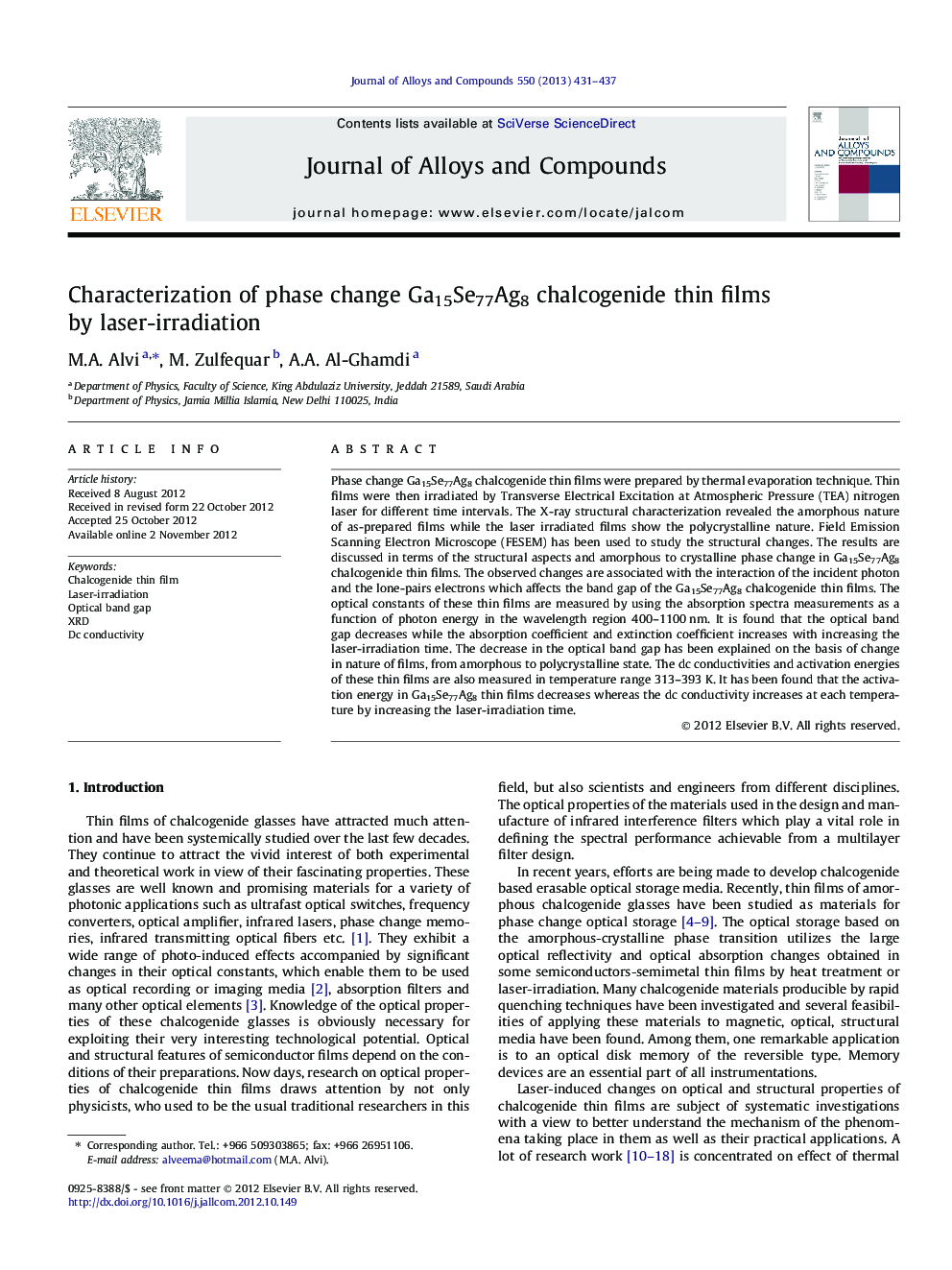| Article ID | Journal | Published Year | Pages | File Type |
|---|---|---|---|---|
| 1615108 | Journal of Alloys and Compounds | 2013 | 7 Pages |
Phase change Ga15Se77Ag8 chalcogenide thin films were prepared by thermal evaporation technique. Thin films were then irradiated by Transverse Electrical Excitation at Atmospheric Pressure (TEA) nitrogen laser for different time intervals. The X-ray structural characterization revealed the amorphous nature of as-prepared films while the laser irradiated films show the polycrystalline nature. Field Emission Scanning Electron Microscope (FESEM) has been used to study the structural changes. The results are discussed in terms of the structural aspects and amorphous to crystalline phase change in Ga15Se77Ag8 chalcogenide thin films. The observed changes are associated with the interaction of the incident photon and the lone-pairs electrons which affects the band gap of the Ga15Se77Ag8 chalcogenide thin films. The optical constants of these thin films are measured by using the absorption spectra measurements as a function of photon energy in the wavelength region 400–1100 nm. It is found that the optical band gap decreases while the absorption coefficient and extinction coefficient increases with increasing the laser-irradiation time. The decrease in the optical band gap has been explained on the basis of change in nature of films, from amorphous to polycrystalline state. The dc conductivities and activation energies of these thin films are also measured in temperature range 313–393 K. It has been found that the activation energy in Ga15Se77Ag8 thin films decreases whereas the dc conductivity increases at each temperature by increasing the laser-irradiation time.
► Effect of laser-irradiation on structure and optical band gap has been investigated. ► The amorphous nature has been verified by X-ray diffraction and DSC measurements. ► Laser-irradiation causes a decrease in optical band gap in Ga15Se77Ag8 thin films. ► The decrease in optical band gap can be interpreted on the basis of amorphous-crystalline phase transformation. ► Optical absorption data showed that the rules of the non-direct transitions predominate.
